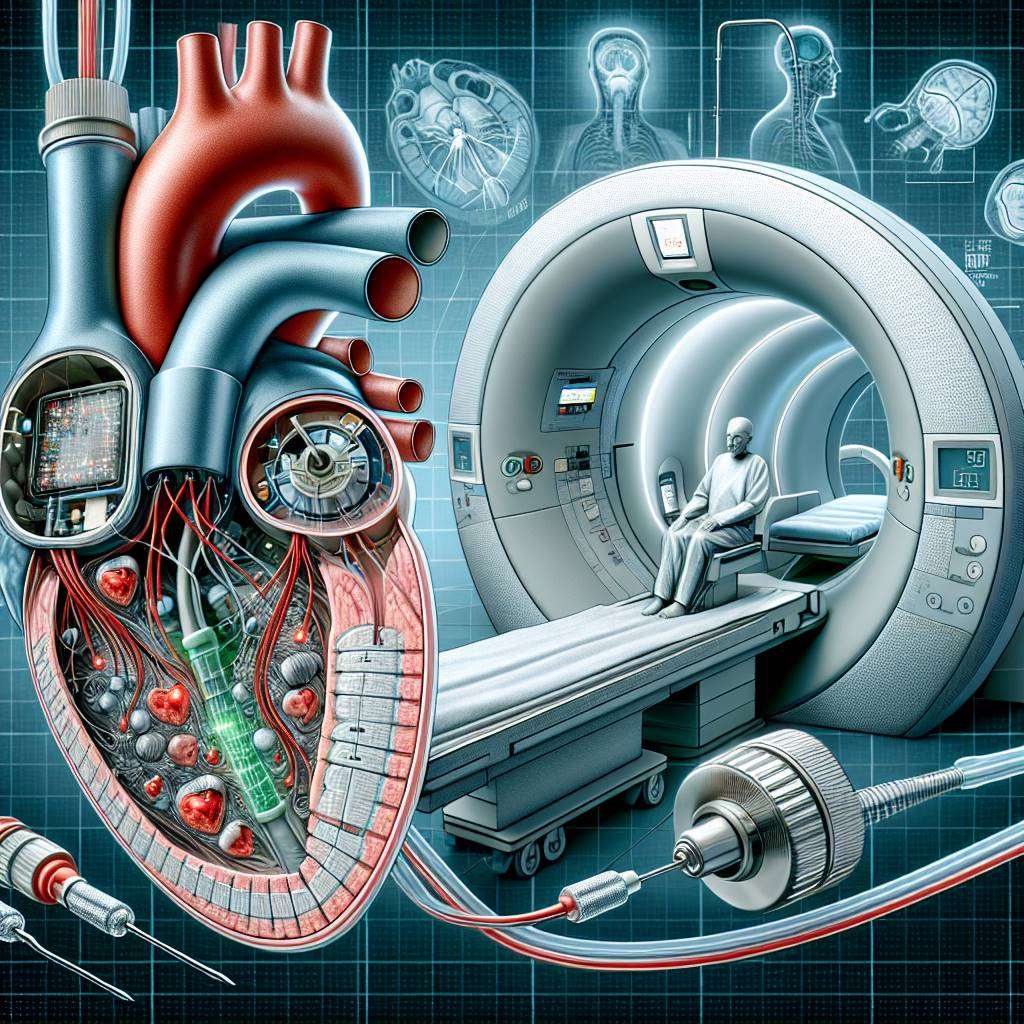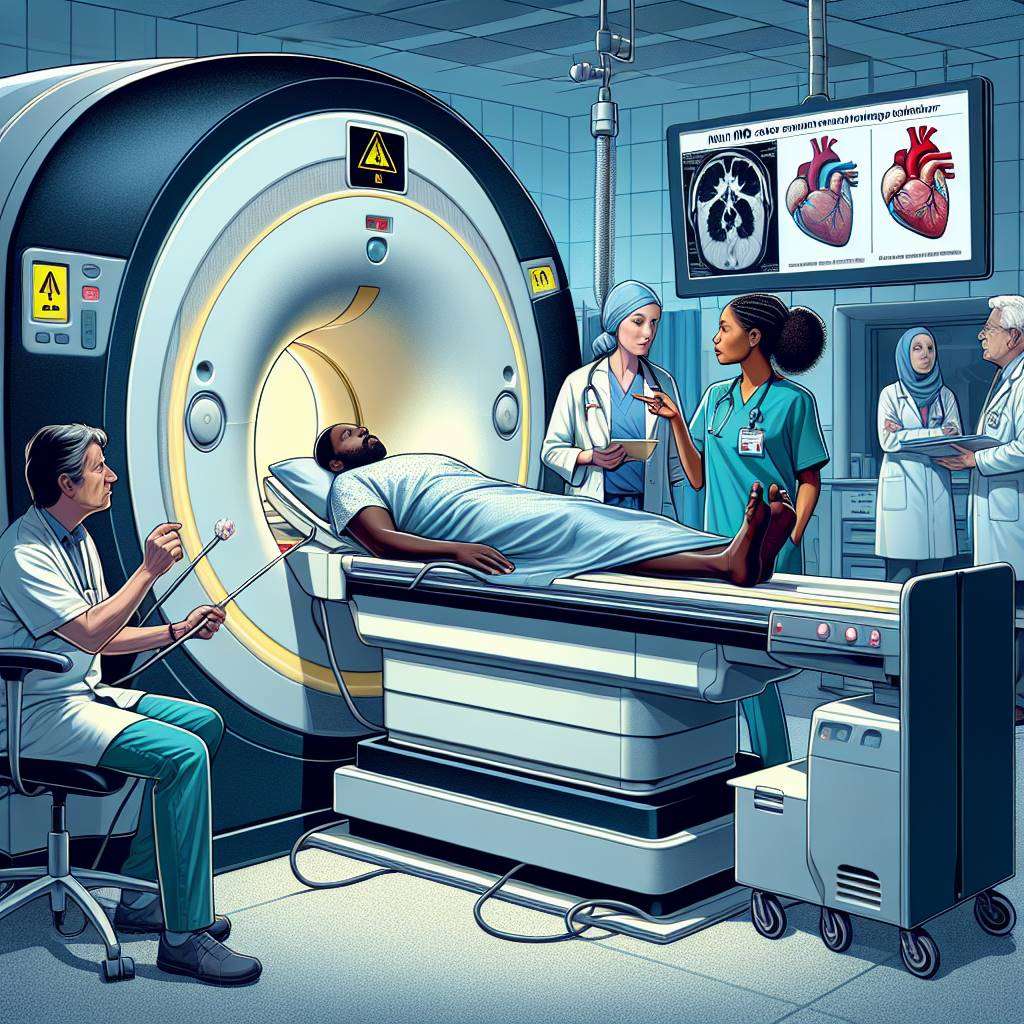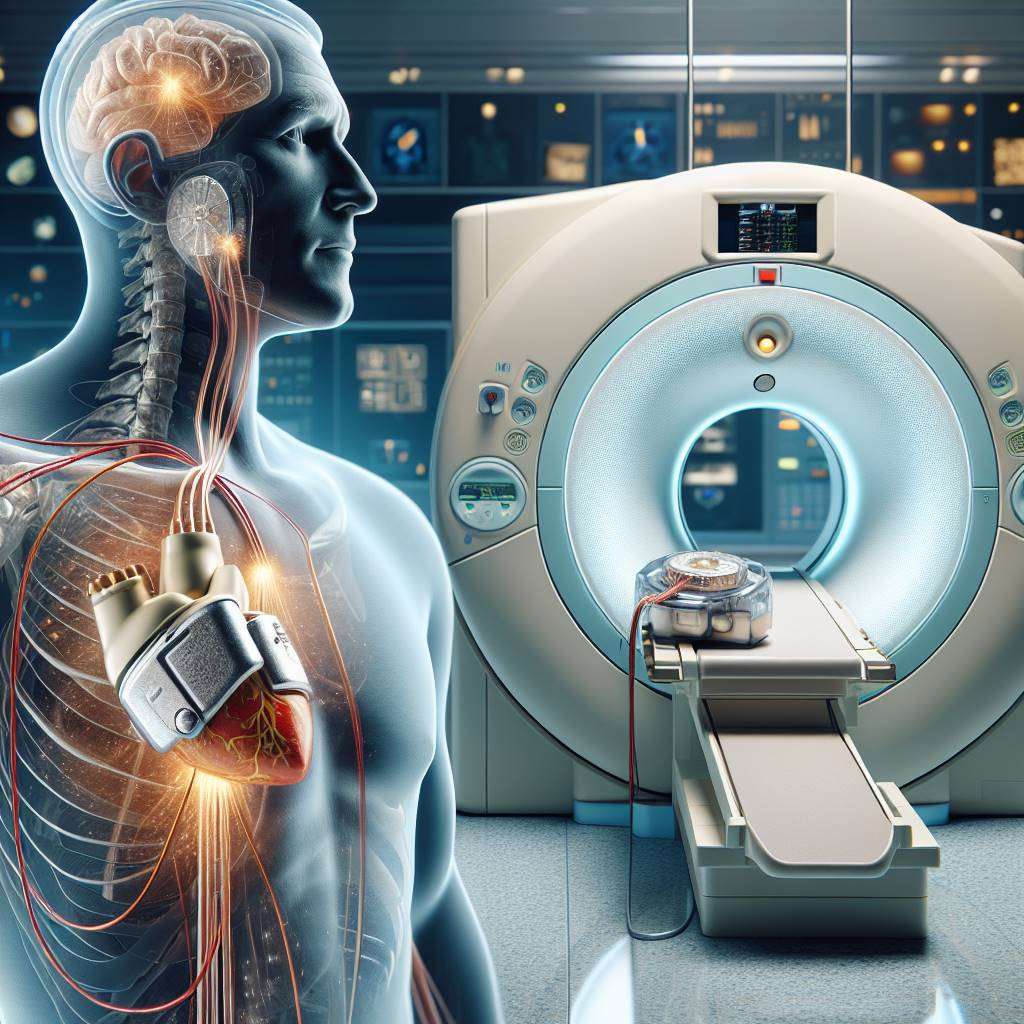Modern pacemakers have significantly advanced, but many patients still wonder, “How MRI-safe are these devices?” With millions of people relying on pacemakers for heart rhythm management, understanding their compatibility with magnetic resonance imaging (MRI) is crucial. This topic is especially important for those requiring frequent imaging for other health conditions.
While older pacemakers posed risks during MRI scans, newer models are designed to be MRI-compatible. However, not all pacemakers are created equal, and it’s vital for patients and healthcare providers to know the specific safety guidelines. This article explores the latest advancements, safety measures, and what patients need to discuss with their doctors before undergoing an MRI.
Are Modern Pacemakers Truly Safe for MRI Scans?
Modern pacemakers have undergone significant advancements to improve their MRI safety. Earlier pacemaker models were highly sensitive to the strong magnetic fields of MRI machines, which could interfere with their functioning or even cause damage. However, newer pacemakers, often labeled as MRI-conditional, are designed to withstand these fields under specific conditions.
It’s important to note that not all pacemakers are MRI-compatible. Patients must consult their cardiologist to confirm whether their device is safe for MRI scans. Additionally, healthcare providers must follow strict protocols, such as programming the pacemaker into a safe mode before the scan. This ensures that the device operates correctly during the imaging process.

Understanding MRI Compatibility in Today’s Pacemaker Technology
The term MRI-conditional refers to pacemakers that are safe for MRI scans under specific conditions. These devices are built with advanced materials and shielding to prevent interference from the magnetic fields. Additionally, the leads (wires connecting the pacemaker to the heart) are designed to minimize heating or movement during the scan.
Manufacturers of modern pacemakers conduct rigorous testing to ensure their devices meet international safety standards. However, even with these advancements, patients must follow certain precautions. For example, the MRI scanner’s settings may need to be adjusted to accommodate the pacemaker. This highlights the importance of collaboration between radiologists and cardiologists.
Patients should always carry their pacemaker identification card, which contains crucial information about the device’s MRI compatibility. This ensures that healthcare providers can make informed decisions during imaging procedures.
Can You Get an MRI with a Pacemaker?
Yes, many patients with modern pacemakers can safely undergo MRI scans, but only if their device is MRI-conditional. Before scheduling an MRI, patients should consult their cardiologist to verify the compatibility of their pacemaker. The cardiologist may also provide specific instructions to ensure the procedure is safe.
Here are some key steps to follow before an MRI with a pacemaker:
- Confirm the pacemaker’s MRI compatibility with your doctor.
- Inform the radiology team about your pacemaker and provide your device ID card.
- Ensure the pacemaker is programmed into a safe mode before the scan.
- Follow all post-scan instructions to reset the pacemaker to its normal settings.
By adhering to these guidelines, patients can minimize risks and benefit from the diagnostic capabilities of MRI scans.
How MRI-Safe Pacemakers Are Revolutionizing Heart Care
The introduction of MRI-safe pacemakers has been a game-changer in cardiac care. These devices allow patients with heart conditions to access advanced imaging techniques without compromising their safety. This is particularly beneficial for diagnosing and monitoring other health issues, such as cancer or neurological disorders.
MRI-safe pacemakers are equipped with features like improved shielding and specialized leads, which reduce the risks associated with magnetic fields. This innovation has expanded the diagnostic options available to patients, ensuring they receive comprehensive care. For example, patients with chronic conditions can now undergo regular MRIs to monitor disease progression without fear of harming their pacemaker.
As technology continues to evolve, the availability of MRI-compatible pacemakers is expected to increase, making this life-saving technology accessible to more patients worldwide.
What Makes a Pacemaker MRI-Compatible or Unsafe?
The safety of a pacemaker during an MRI scan depends on several factors. MRI-compatible pacemakers are designed with materials that resist magnetic interference. Additionally, their leads are engineered to prevent heating or displacement caused by the MRI’s strong magnetic fields.
In contrast, older pacemakers or those not labeled as MRI-conditional may pose significant risks. These include device malfunction, changes in pacing settings, or even damage to the heart tissue. To illustrate the differences, here’s a comparison:
| Feature |
MRI-Compatible Pacemaker |
Non-Compatible Pacemaker |
| Material |
Magnetically shielded |
Standard materials |
| Leads |
Specialized to prevent heating |
Standard leads |
| Safety |
Safe under specific conditions |
High risk during MRI |
Understanding these differences is crucial for patients and healthcare providers to make informed decisions about imaging procedures.
Risks of MRI Scans for Non-MRI-Safe Pacemakers
Magnetic Resonance Imaging (MRI) is a powerful diagnostic tool, but it can pose significant risks for individuals with non-MRI-safe pacemakers. Traditional pacemakers are sensitive to the strong magnetic fields generated during an MRI scan. These fields can interfere with the pacemaker's function, potentially causing it to malfunction or stop working altogether.
One major concern is the heating of the pacemaker leads, which can damage surrounding heart tissue. Additionally, the magnetic field may disrupt the pacemaker's programming, leading to irregular heart rhythms or other complications. For this reason, patients with older pacemakers are often advised to avoid MRI scans unless absolutely necessary.
It is crucial to consult your cardiologist before undergoing an MRI if you have a pacemaker. They can assess the risks and determine whether alternative imaging methods, such as a CT scan, might be safer for your condition.

Latest Advances in MRI-Safe Pacemaker Design
Modern technology has revolutionized the design of pacemakers, making many of them MRI-compatible. These advanced devices are specifically engineered to withstand the magnetic fields of an MRI scan without compromising their functionality. This innovation has been a game-changer for patients requiring frequent imaging for conditions like cancer or neurological disorders.
Key features of MRI-safe pacemakers include specially coated leads that resist heating and advanced programming to prevent interference from magnetic fields. These devices are rigorously tested under MRI conditions to ensure their safety and reliability. Additionally, manufacturers often provide detailed guidelines for healthcare providers on how to manage MRI scans for patients with these pacemakers.
Thanks to these advancements, patients with MRI-safe pacemakers can now access critical diagnostic imaging without the risks associated with older devices. Always check with your doctor to confirm if your pacemaker is MRI-compatible.
Precautions to Take Before an MRI with a Pacemaker
Before undergoing an MRI scan, it is essential to take specific precautions if you have a pacemaker. First, consult your cardiologist to determine whether your device is MRI-compatible. They may need to review your medical records or contact the pacemaker manufacturer for confirmation.
Inform the radiology team about your pacemaker well in advance. This allows them to adjust the MRI settings and ensure the scan is performed safely. In some cases, the pacemaker's settings may need to be temporarily reprogrammed before the scan to minimize risks.
- Carry your pacemaker ID card to provide essential details about your device.
- Ensure that a trained technician or cardiologist is available during the scan.
- Follow all instructions provided by your healthcare team to avoid complications.
Taking these precautions can significantly reduce the risks and ensure a safe MRI experience for patients with pacemakers.
How to Check If Your Pacemaker Is MRI-Compatible
Determining whether your pacemaker is MRI-compatible is a critical step before scheduling an MRI scan. Most modern pacemakers come with documentation or an ID card that specifies their compatibility with MRI machines. If you are unsure, consult your cardiologist or the device manufacturer for clarification.
Another way to check is by reviewing the model number and specifications of your pacemaker. Many manufacturers provide online resources or customer support to help patients verify their device's compatibility. Additionally, your healthcare provider may use specialized equipment to assess the pacemaker's settings and confirm its safety for MRI scans.
Remember, even if your pacemaker is MRI-safe, the procedure must be performed under strict medical supervision to ensure your safety. Always communicate openly with your healthcare team about your device and any concerns you may have.
What Happens During an MRI with a Modern Pacemaker?
Undergoing an MRI with a modern, MRI-safe pacemaker is a carefully managed process. Before the scan, your healthcare team will verify the compatibility of your pacemaker and may adjust its settings to ensure it functions correctly during the procedure.
During the MRI, the radiology team will monitor your heart rate and pacemaker activity closely. The scan is performed using specific protocols designed to minimize interference with the pacemaker. In most cases, the procedure is completed without any complications, allowing doctors to obtain high-quality images for diagnosis.
After the scan, your pacemaker settings will be restored to their original configuration, and your cardiologist may perform a follow-up check to ensure everything is functioning as expected. This process ensures that patients with modern pacemakers can safely benefit from the diagnostic power of MRI technology.
Do MRI-Safe Pacemakers Eliminate All Risks Completely?
Modern MRI-safe pacemakers are designed to reduce risks during MRI scans, but they do not eliminate all potential hazards. These devices are built with materials and technology that minimize interference with the strong magnetic fields of an MRI machine.
However, even with advancements, certain precautions must be taken. For instance, the MRI must be conducted in a controlled environment, and the pacemaker's settings may need to be adjusted temporarily. Additionally, not all MRI machines are compatible with every MRI-safe pacemaker model.
Patients with heart conditions should always consult their cardiologist before undergoing an MRI. While the risks are significantly lower with MRI-safe devices, factors like device age, placement, and individual health conditions can still pose challenges.

Key Differences Between MRI-Safe and Traditional Pacemakers
Understanding the differences between MRI-safe pacemakers and traditional ones is crucial for patients. Traditional pacemakers are not designed to withstand the magnetic fields of MRI machines, which can lead to device malfunction or harm to the patient.
In contrast, MRI-safe pacemakers use advanced materials and shielding to prevent interference. They also have leads (wires) that are specifically designed to reduce heating and movement during an MRI scan. This makes them safer for patients who may require frequent imaging.
Here’s a quick comparison:
| Feature |
MRI-Safe Pacemakers |
Traditional Pacemakers |
| Compatibility with MRI |
Yes, with conditions |
No |
| Risk of Interference |
Minimal |
High |
| Lead Design |
Specialized |
Standard |
Why MRI Safety Matters for Pacemaker Patients
For patients with pacemakers, MRI safety is a critical consideration. MRI scans are often essential for diagnosing conditions like tumors, strokes, or joint issues. However, the strong magnetic fields can interfere with pacemaker function, leading to potential complications.
Without an MRI-safe pacemaker, patients may face limited diagnostic options, which can delay treatment. This is especially concerning for individuals with chronic illnesses or complex medical histories. MRI-safe devices provide a safer alternative, allowing patients to access advanced imaging when needed.
It’s important to note that even with MRI-safe pacemakers, certain precautions are necessary. Always inform your healthcare provider about your device before scheduling an MRI to ensure proper protocols are followed.
FAQs About MRI Scans and Pacemaker Safety
Many patients have questions about MRI scans and pacemaker safety. Here are some common queries:
- Can I get an MRI with a pacemaker? Yes, if you have an MRI-safe pacemaker and follow medical guidelines.
- Are all MRI machines compatible? No, only certain machines are approved for use with MRI-safe pacemakers.
- What precautions are needed? Your doctor may adjust your pacemaker settings before the scan.
- Is there any risk? While risks are reduced, complications can still occur in rare cases.
Always discuss your concerns with your doctor to ensure you have accurate information tailored to your specific health needs.
Consulting Your Doctor About MRI-Safe Pacemakers
If you’re considering an MRI-safe pacemaker, consulting your doctor is the first step. Your cardiologist can evaluate your medical history, current health, and imaging needs to determine if this type of device is right for you.
During your consultation, ask about the benefits and limitations of MRI-safe pacemakers. Discuss how the device will impact your daily life and whether it’s compatible with the MRI facilities in your area. Your doctor may also explain the procedure for adjusting the pacemaker during an MRI scan.
Remember, open communication with your healthcare provider is key to making informed decisions about your heart health and imaging options.
Best Pacemaker Surgery Doctors in India
Dr. Balbir Singh, a renowned cardiologist at Medanta - The Medicity, Gurugram, has over 30 years of experience in electrophysiology and pacemaker implantation. Another expert is Dr. Praveen Chandra from Fortis Escorts Heart Institute, Delhi, with DM (Cardiology) and extensive international exposure in advanced cardiac care. Both are globally recognized for their expertise in pacemaker procedures.
Learn more on best pacemaker implantation surgery doctors in india
Best Pacemaker Surgery Hospitals in India
Fortis Escorts Heart Institute, Delhi, and Medanta - The Medicity, Gurugram, are leading hospitals for pacemaker procedures. Both are NABH and JCI accredited, offering advanced technologies like 3D mapping and robotic cardiac care. They provide excellent international patient services and have a track record of successful outcomes in complex cases.
Find more best pacemaker implantation surgery hospitals in india
Pacemaker Surgery Cost in India
The cost of pacemaker implantation in India typically ranges from INR 2,50,000 to 5,00,000 (approximately USD 3,000 to 6,000). Factors like the type of pacemaker, hospital category, and doctor’s expertise influence the cost. The average hospital stay is 2-3 days. India offers a significant cost advantage compared to Western countries, with options for insurance coverage and third-party financing.
Learn pacemaker implantation surgery cost in india
Pacemaker Surgery Treatment in India
Pacemaker implantation in India involves minimally invasive techniques, where the device is placed under the skin near the chest. Advanced technologies like 3D imaging and remote monitoring ensure precision. Recovery typically takes 1-2 weeks. Top hospitals adhere to global medical protocols and incorporate innovations like leadless pacemakers for better outcomes.
Learn on Pacemaker Surgery Treatment in India
FAQs
Are all modern pacemakers MRI-safe?
Not all pacemakers are MRI-safe. However, many modern pacemakers are designed to be MRI-conditional, meaning they can be safely used in MRI environments under specific conditions. Always consult your cardiologist before undergoing an MRI.
What does MRI-conditional mean for pacemakers?
MRI-conditional pacemakers are devices that can safely function during an MRI scan if certain conditions, such as specific magnetic field strength and device programming, are met. These conditions are outlined by the manufacturer.
Can older pacemakers be replaced with MRI-compatible ones?
Yes, older pacemakers can be replaced with MRI-compatible models during a device upgrade or replacement procedure. This decision should be made in consultation with your cardiologist.
What precautions should I take before an MRI with a pacemaker?
Before an MRI, ensure your pacemaker is MRI-conditional. Inform the radiologist and cardiologist about your device, and follow their specific guidelines for the scan.
Are there risks associated with MRI scans for pacemaker patients?
For patients with non-MRI-compatible pacemakers, MRI scans can pose risks like device malfunction or heating. However, with MRI-conditional pacemakers, these risks are minimized when proper protocols are followed.
How do I know if my pacemaker is MRI-compatible?
Your pacemaker's compatibility is mentioned in its documentation. You can also consult your cardiologist or the device manufacturer for confirmation.
What happens if I need an MRI but my pacemaker is not MRI-compatible?
If your pacemaker is not MRI-compatible, alternative imaging methods like CT scans or ultrasounds may be recommended. In some cases, device replacement may be considered.
How often should I check my pacemaker's functionality?
Regular follow-ups, typically every 6-12 months, are essential to ensure your pacemaker is functioning correctly. Your cardiologist may adjust this schedule based on your health condition.
What advancements are being made in pacemaker technology?
Recent advancements include leadless pacemakers, remote monitoring, and devices with longer battery life. These innovations aim to improve patient comfort and reduce complications.
Can I travel with a pacemaker?
Yes, you can travel with a pacemaker. Inform airport security about your device, as it may trigger metal detectors. Carry your pacemaker ID card at all times.
Understanding Pacemakers: Pediatric vs. Adult and Removal Considerations
Pacemakers play a crucial role in managing heart rhythms, but their design and application can vary significantly between pediatric and adult patients. For instance, pediatric pacemakers are specifically tailored to meet the unique physiological needs of children, differing in size, functionality, and longevity compared to adult implants.
As patients age or their health conditions change, the need for a pacemaker may also evolve. In some cases, it may be necessary to consider whether a pacemaker can be removed. Understanding the reasons behind this decision, such as complications or improved heart function, is essential for both patients and caregivers.
By exploring these topics, we can better appreciate the complexities of cardiac care across different age groups and the factors influencing the management of pacemakers.